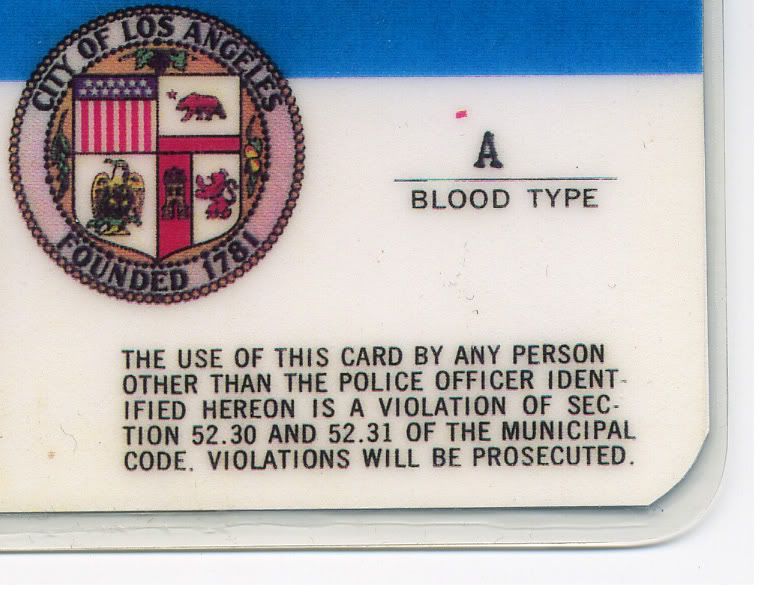<div class='quotetop'>(phase pistol @ Aug 30 2006, 11:29 PM) [snapback]1309829[/snapback]</div>
<div class='quotetop'>(AnsonJames @ Aug 30 2006, 05:06 PM) [snapback]1309706[/snapback]</div>
The four lines of Japanese on the back of the ID card, Romanized, reading from top to bottom:
Touyou Bijutsu Gakkou 3505B. Chiyoda
Nippon Kougakuin Senmon Gakkou Geijutsu Katei
Nippon Desain Senmon Gakkou Senmon Gaku
Toukyou Shasshin
Translated into English:
Toyo Institute of Art and Design 3505B. Chiyoda [place name]
Nippon Engineering College Art Program
Nippon Design College Vocational Studies
Tokyo Photograph
And, just for fun, links to the homepages of the first three schools above:
Toyo Institute of Art and Design
Nippon Engineering College
Nippon Design College
The fourth name, “Tokyo Photograph,” proved to be too ambiguous to get a definitive hit.
Knowing what the back of the card says sorta takes the charm out of it, don't it?
:loveWho reads Japanese?[/b]
<div class='quotetop'>(AnsonJames @ Aug 30 2006, 05:06 PM) [snapback]1309706[/snapback]</div>
[/b]
The four lines of Japanese on the back of the ID card, Romanized, reading from top to bottom:
Touyou Bijutsu Gakkou 3505B. Chiyoda
Nippon Kougakuin Senmon Gakkou Geijutsu Katei
Nippon Desain Senmon Gakkou Senmon Gaku
Toukyou Shasshin
Translated into English:
Toyo Institute of Art and Design 3505B. Chiyoda [place name]
Nippon Engineering College Art Program
Nippon Design College Vocational Studies
Tokyo Photograph
And, just for fun, links to the homepages of the first three schools above:
Toyo Institute of Art and Design
Nippon Engineering College
Nippon Design College
The fourth name, “Tokyo Photograph,” proved to be too ambiguous to get a definitive hit.
Knowing what the back of the card says sorta takes the charm out of it, don't it?
Last edited by a moderator:





